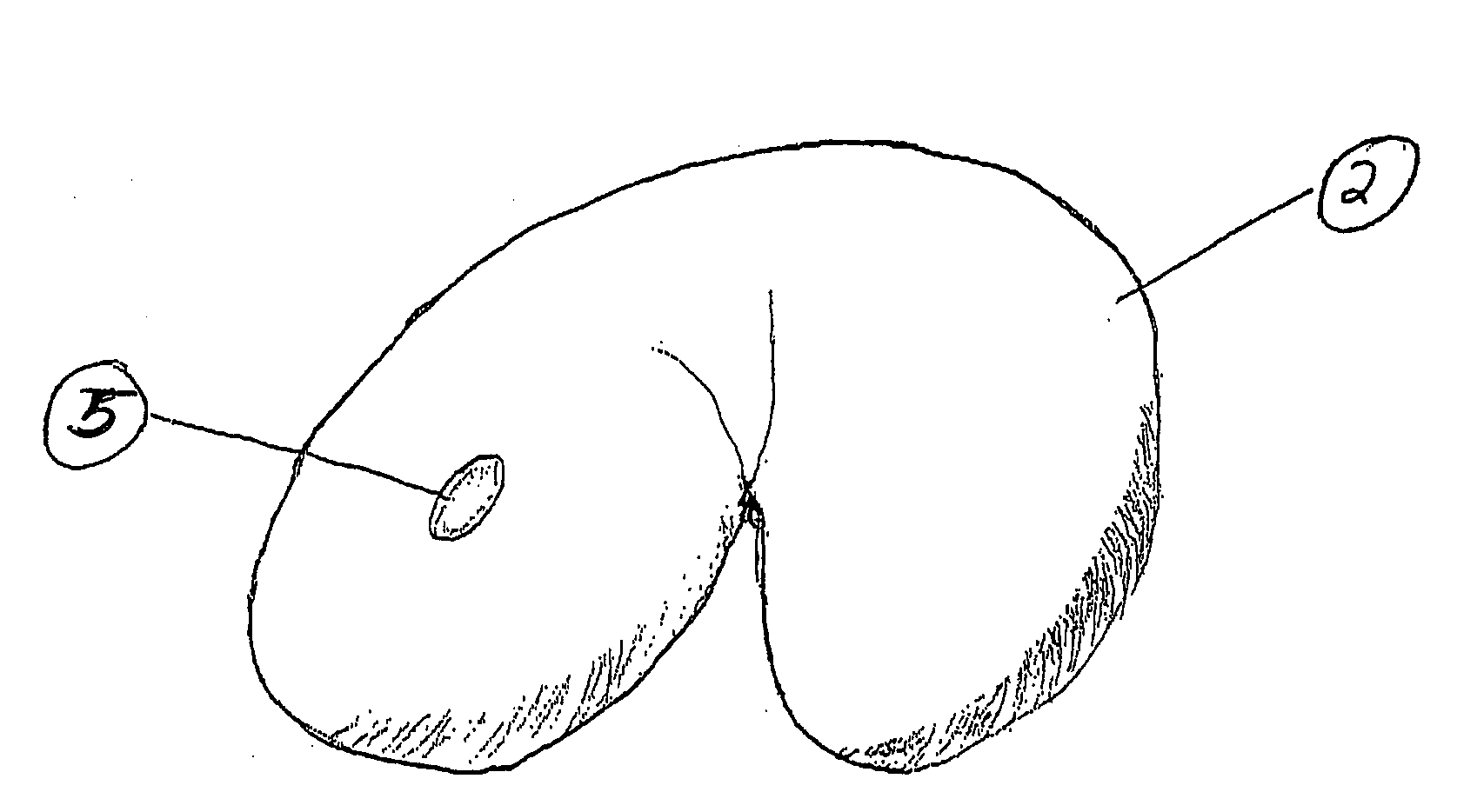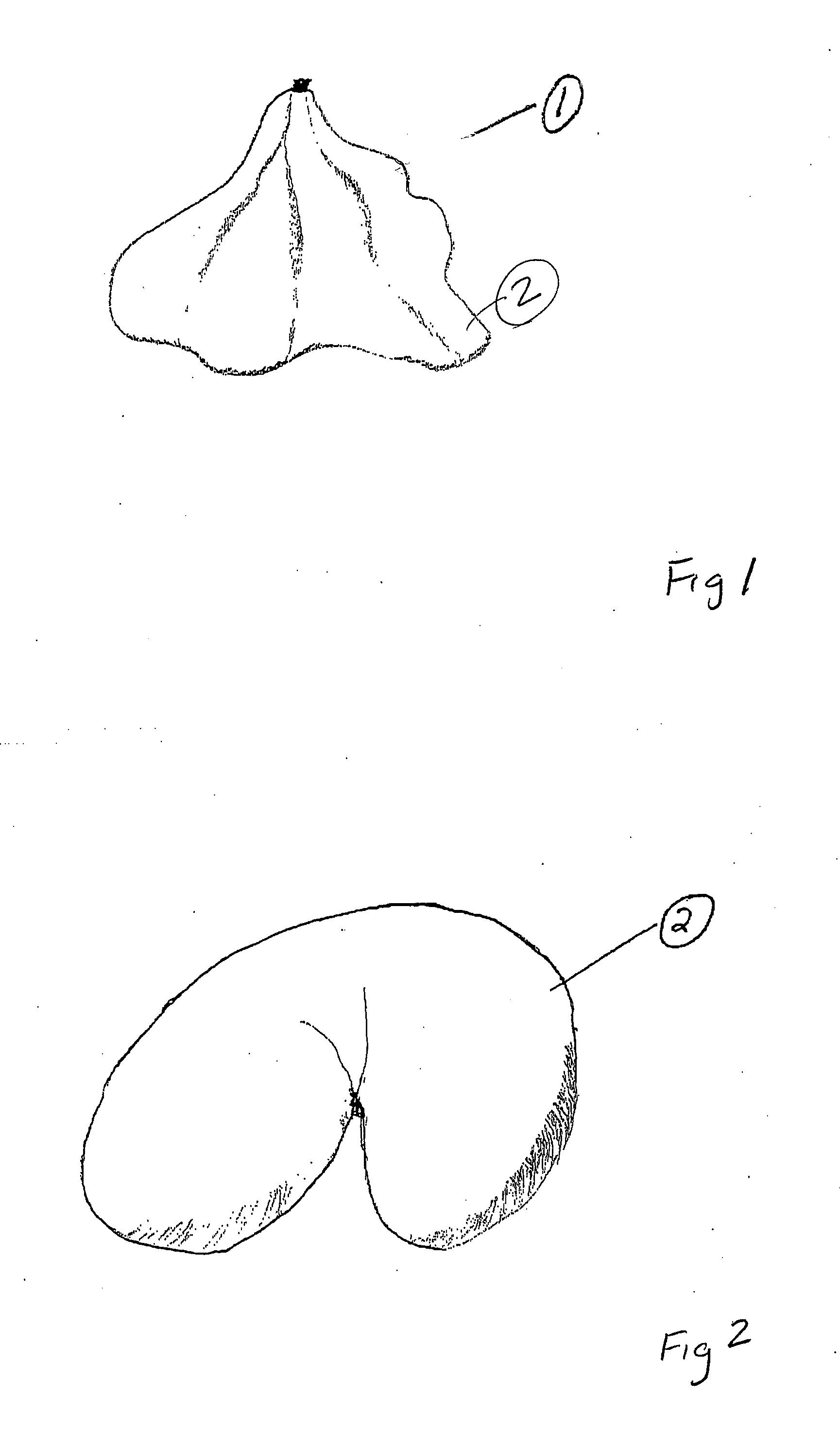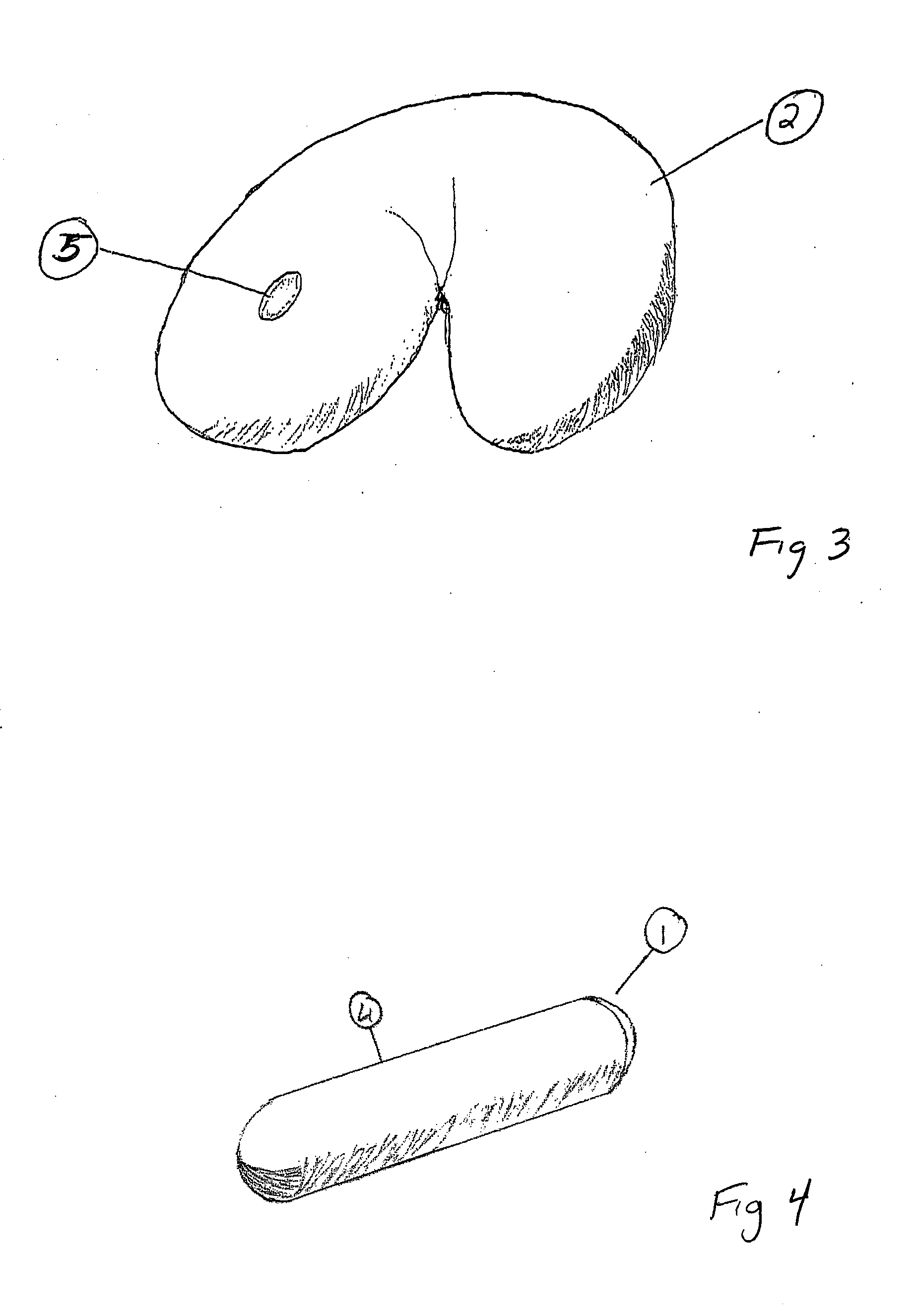Intragastric Volume-Occupying Device
- Summary
- Abstract
- Description
- Claims
- Application Information
AI Technical Summary
Benefits of technology
Problems solved by technology
Method used
Image
Examples
example 1
[0033]A device was made using an anisotropic ePTFE membrane and approximately 2 grams of hydrogel (BASF, Luquasorb 1010, Florham Park, N.J.). The ePTFE membrane was coated with a glutaraldehyde cross-linked PVA coating to render it hydrophilic. The coated membrane was cut into a 6″×3″ (l×w) rectangle and the hydrogel was placed in the center of the membrane. The membrane was stretched in the transverse direction approximately 50%. The corners of the membrane were brought together and tied into a knot creating a bag. The bag was then placed into a container containing more than 200 ml of tap water and observed. The device swelled to approximately 200 ml within 10 minutes.
example 2
[0034]A device was constructed as in Example 1; however, the coated membrane was not stretched prior to making the bag. The bag was then placed into approximately 200 ml of tap water and observed. The device swelled to approximately 200 ml within 45 minutes.
example 3
[0035]A device was constructed using the method described in Example 1. In addition to the hydrogel, 4 grams of BaSO4 (Mallinckrodt, MK8821-04, Phillipsburg N.J.) were also placed within the bag for radiopacity. The bag was placed into tap water and observed under fluoroscopy. The device was visible using x-ray fluoroscopy under a 40 mm aluminum plate.
PUM
 Login to View More
Login to View More Abstract
Description
Claims
Application Information
 Login to View More
Login to View More - Generate Ideas
- Intellectual Property
- Life Sciences
- Materials
- Tech Scout
- Unparalleled Data Quality
- Higher Quality Content
- 60% Fewer Hallucinations
Browse by: Latest US Patents, China's latest patents, Technical Efficacy Thesaurus, Application Domain, Technology Topic, Popular Technical Reports.
© 2025 PatSnap. All rights reserved.Legal|Privacy policy|Modern Slavery Act Transparency Statement|Sitemap|About US| Contact US: help@patsnap.com



